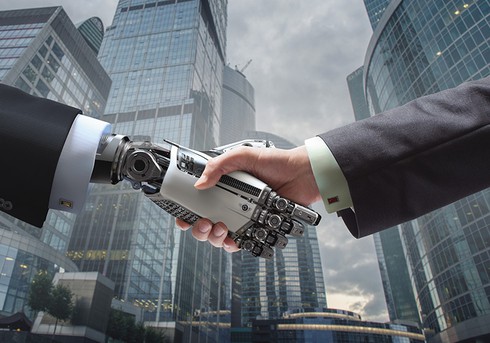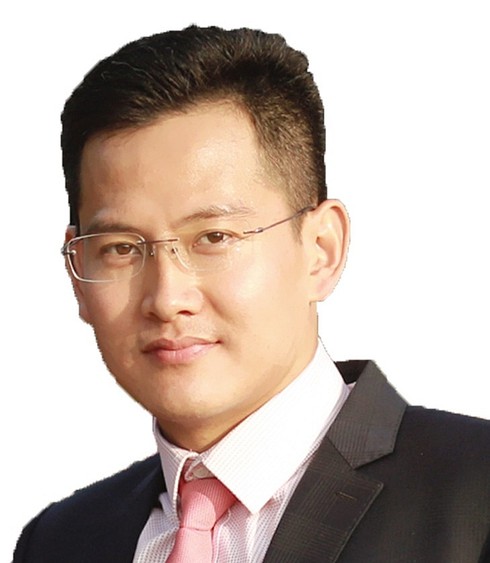AI drives urban management future
Mon, 21 Oct 2019 15:18:00 | Print | Email Share:
The fast growth of Vietnam’s economy has seen an increase of the urban population, posing significant challenges to the country’s major cities, particularly in terms of transport and urban planning management.

Authorities and citizens will profit from the advantages that AI brings
to urban and infrastructure development (Photo: Shutterstock)
Nguyen Duc Kien, director of the Solutions and System Integration Centre for Vietnam Posts and Telecommunications Group (VNPT), gives out solutions for these issues by using artificial intelligence.
Cities such as Hanoi and Ho Chi Minh City are facing increasing traffic congestion, environmental pollution, and life quality deterioration because urban technical infrastructure is inadequate and urban management capacity cannot catch up with population growth.
However, over the years Vietnam’s government has paid special attention to the Fourth Industrial Revolution, promoting the application of high and digital technologies in all fields to promote sustainable socio-economic development. AI is one of the core technologies of Industry 4.0, having a strong impact on almost all fields of socio-economic life from production and product consumption to social management.
Traffic problems, and urban planning of Vietnam and other countries are gradually being solved with the participation of AI. The leading technology corporations in Vietnam, such as VNPT and Viettel, are investing large resources in the development of such technology. The first AI tech products have been introduced and applied such as plate recognition in traffic, face recognition in the field of digital government, and in security and education.
Overall, AI refers to not only technology but also a range of methods to demonstrate intelligent behaviours such as logic in solving problems. It has many benefits in data analysis, trend detection, creating future models, handling highly accurate jobs, and working in environments that are not suitable for humans. On the other hand, it also brings big risks related to cyber attacks, data protection, and transparency, as well as potential risks for people due to close surveillance.
AI in transport
AI is applied in developing driverless cars, managing traffic, ensuring security through face recognition, license plates, and many other applications.
Road transport is one of the industries that AI is most successfully applied, making transportation safer, quicker, and more convenient. The number of traffic accidents will be significantly reduced thanks to the minimisation of errors in human behaviour by replacement of unmanned vehicles, which are automatically controlled by AI.
Unmanned cars rely on a variety of sensors such as GPS, cameras, radars, controllers, and software.

Nguyen Duc Kien, director of the Solutions and System Integration Centre
for Vietnam Posts and Telecommunications Group (VNPT)
Currently, applying AI technologies for all driving functions are being tested, but it will be difficult because of the complexity of different factors such as the road system, transport infrastructure like signs and intersections, and the unpredictability of other vehicles travelling on roads.
In another application, AI technology combined with cameras and sensors attached along roads will collect and analyse traffic flow data, to issue warnings and control flows, contributing to reduction traffic congestion and thereby saving time for travellers, all while reducing pollution emissions to the urban environment.
AI technologies will help traffic managers analyse traffic patterns, flows, and optimal roads.
They can provide drivers with information on the fastest and most open routes to reduce congestion. In addition, AI technologies can also help calculate and control traffic signals in real time to meet existing traffic flows.
This AI application is being invested in by Vietnam’s leading technology corporations because it is very practical and there is a great demand from our country’s cities. VNPT has used this application to deploy traffic camera systems to monitor security and control traffic, initially achieving some success across some urban areas of Vietnam.
AI is also used in the aviation industry. Advances in automation and computing power, using technologies relevant to AI and analysing model data have been used to improve the management of increased air traffic volumes.
AI can create optimal processes and tasks in the aviation industry such as checking engine safety, operating aircraft movement, and flight rotation factors such as refuelling, and loading and unloading.
Besides that, AI helps uncover unwanted items going through airport security checks thanks to face recognition and big data processing to detect anomalies and prevent major incidents.
For other industries such as rail and sea transport, AI technologies have also had many applications in automation, transport process optimisation, routing optimisation, and creating economic values as well as improving service quality.
Urban planning management
AI technology has helped managers solve problems related to urban management, planning, and implementation. Application of such technology is applied in geographic analysis, prominent in the case of Ho Chi Minh City. AI processes the vast amount of image data collected from satellites and provides detailed analysis information and results.
This can clearly show the transformation of the city almost in real time, checking the development of the urban area based on the approved plan. In addition, the application of AI technology can perform classification of surfaces and land use according to space and time, thereby providing predictive analysis of future urban space use and support for urban planners.
AI technology combined a network of sensors also assists the city in planning maintenance and improving the urban technical infrastructure network. Based on data collected by devices utilising the Internet of Things, the status of urban infrastructure will be updated in real time, warning the management unit in case repair or maintenance is needed.
For example, large potholes in the street can be determined by the data generated by vibration sensors. Thereby the city can capture the status and make suitable plans for repairs, avoiding traffic disruptions and accidents.
The strong development of smart mobile devices is also a huge source of data to help cities solve problems related to urban planning management. The city can work together with network operators to collect data on subscriber density in different time frames to be able to capture the population density in an area and give out analysis and forecasts supporting the planning of houses, along with other urban facilities and utilities.
Thus, with AI technology, cities will have an effective tool to manage urban planning and traffic, solve the problems of congestion in urban life, and help improve the quality of people’s lives.
It will also help optimise and develop authorities’ urban management capacity. AI technology will be the future of Vietnamese cities, helping them change the structure of society and upgrade the economy to a new level.
By: VIR/VOV
---------------------------------------------
Same category News :













